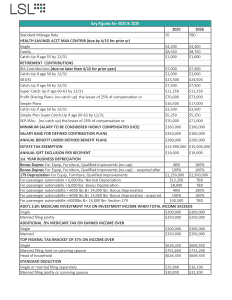If you inherited an IRA or retirement plan account after 12/31/19, you are required to take required minimum distributions (RMDs) beginning in 2023.
EXCEPTIONS to this are:
- A surviving spouse
- A person who is not more than ten years younger than the decedent
- A minor child of the decedent (a minor child is anyone under the age of 21)
- A person who is disabled
- A person who is chronically ill (Note: The regulations provide documentation requirements and definitions relating to disabled and chronically ill beneficiaries.)
For those in this exception category, you can use either the lifetime distribution rule or the “five-year” rule. Please consult your brokerage firm or LSL advisor for guidance.
Original interpretations of the 2019 SECURE Act dictated that beneficiaries who fell outside of these exceptions had until the end of the 10th calendar year following the calendar year of the IRA/retirement account owner’s death to empty the IRA/retirement account, with no minimum distributions required during that 10-year period.
In February of 2022 the IRS came out with proposed regulations that required these beneficiaries to take an RMD each year following the IRA/retirement account owner’s death. This was a shock to the profession, and we feared taxpayers would be subjected to the 50% penalty for not abiding by the RMD rules, especially considering that year 2021 had already passed and many beneficiaries of post-2019 deaths had failed to take RMDs as required by these proposed regulations.
Relief came in the fall of 2022 when the IRS issued final regulations on this matter, and provided “transition relief”, waiving the 50% penalty for RMDs not taken in 2021 and 2022. But such beneficiaries are indeed required to begin RMDs from the inherited IRA/retirement account by the end of 2023.
What does all of this mean?
The IRS has been silent on the details of the 2023 “catch-up”. It is not clear whether a beneficiary who missed their 2021 and 2022 RMDs should 1.) spread RMDs over the remaining years until the 10th anniversary of the calendar year of the original owner’s death (e.g. divide by 8 years), or 2.) take the missed 2021 and 2022 RMDs along with the 2023 RMD in 2023 (dividing by 10 years). In order to protect you with the conservative approach, we suggest the latter option, taking all missed RMDs by the end of 2023.
Please consult your brokerage firm or LSL advisor for guidance to carry out your requirements related to an inherited IRA or retirement plan.




